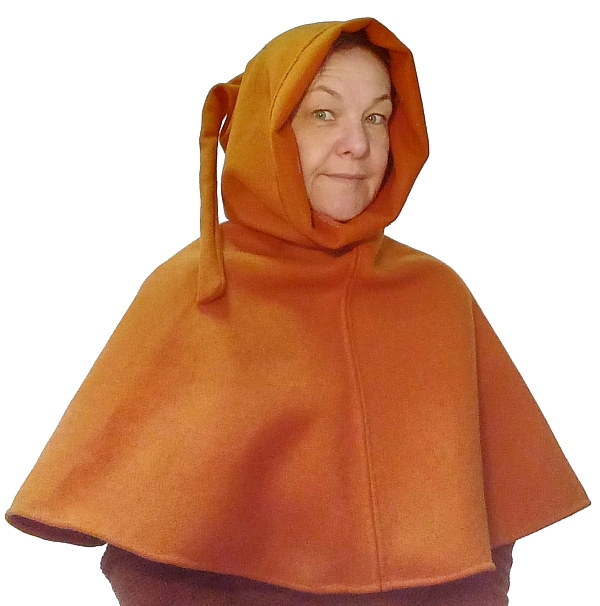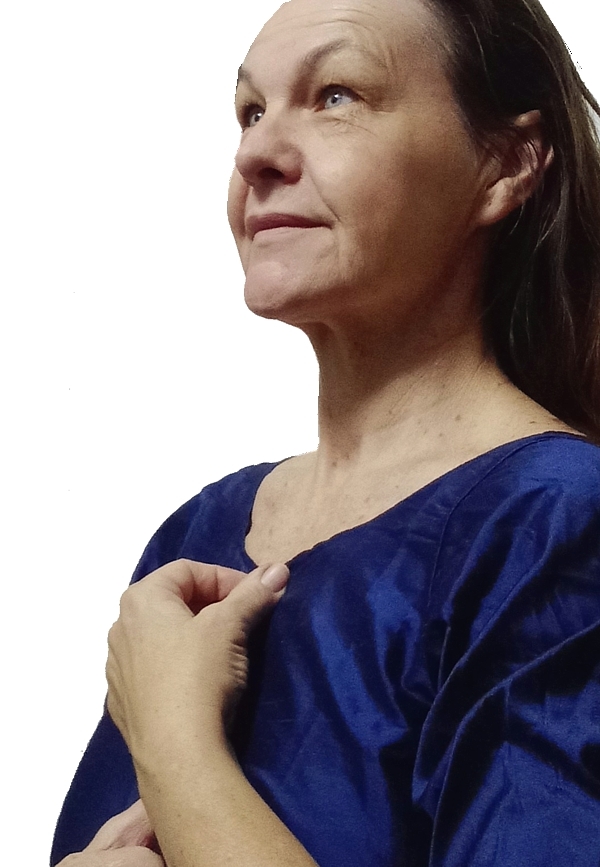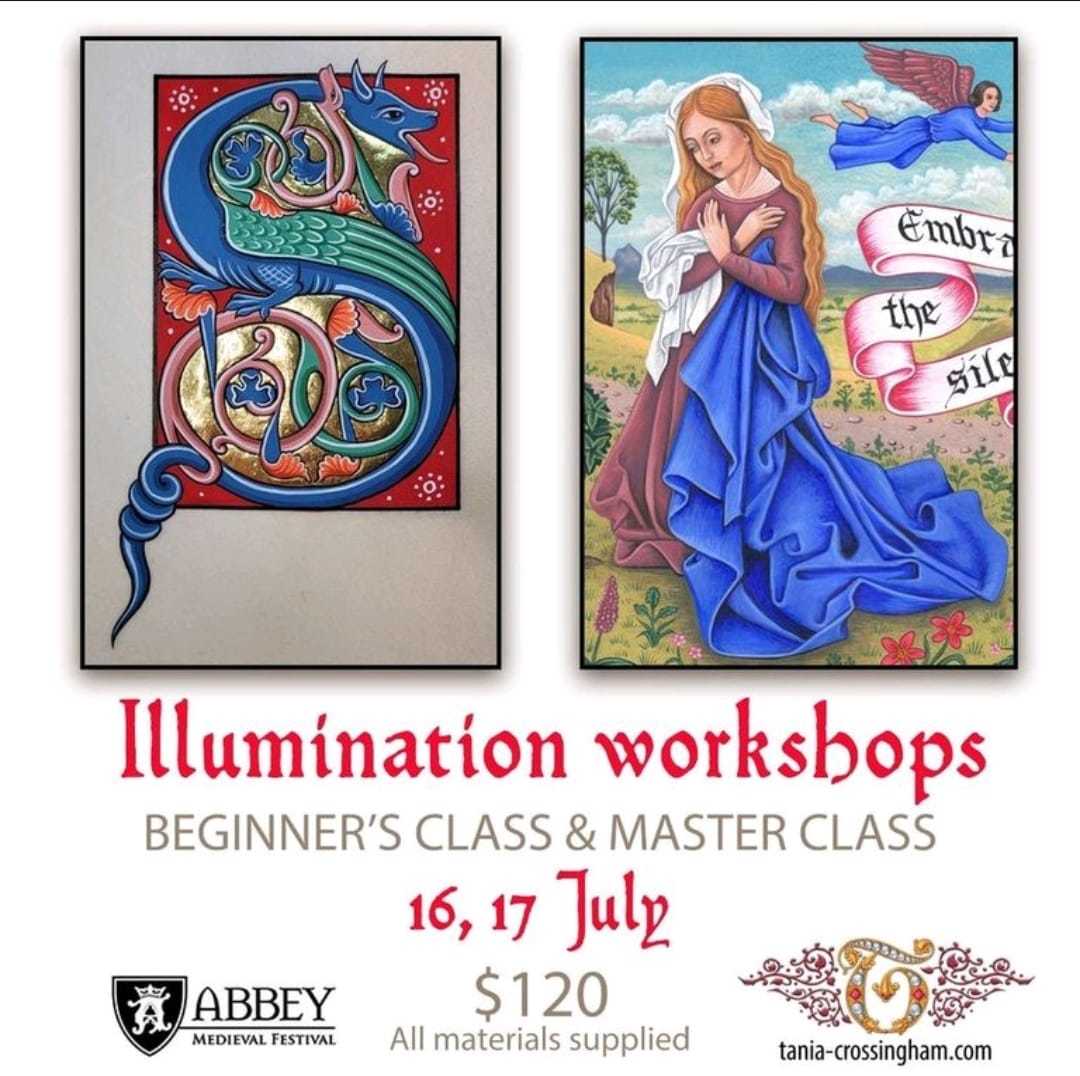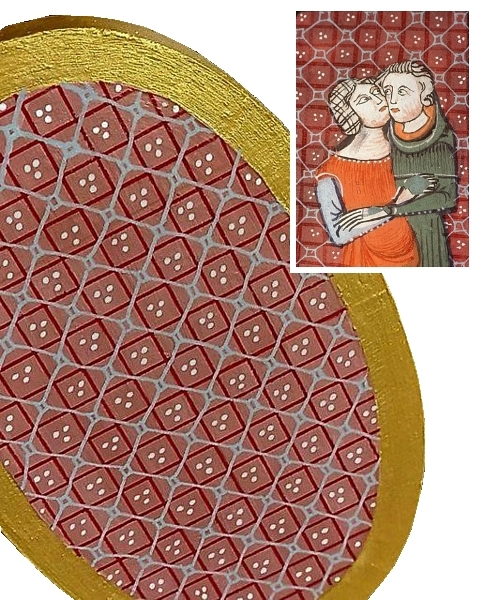
A few weeks ago I was excited to attend the
Tania Crossing School of Illumination workshop of Figures & Drapery held in the hall at the Abbey Museum of Art & Archaeology. I've done one of her workshops before on illuminated letters, and I have done some art over the years, so it was more of a refresher and a look at her ideas and techniques.
She supplied all the goodies we needed, and we got down to work!

Firstly, we had a little chat about supplies and what we were using in case there were any newbies in the group who hadn't done any illuminating before, then we drew in our main figure, working from an image Tania had provided to us. I found this the most challenging of all, because I prefer to draw stuff from scratch, not copy someone else's work.
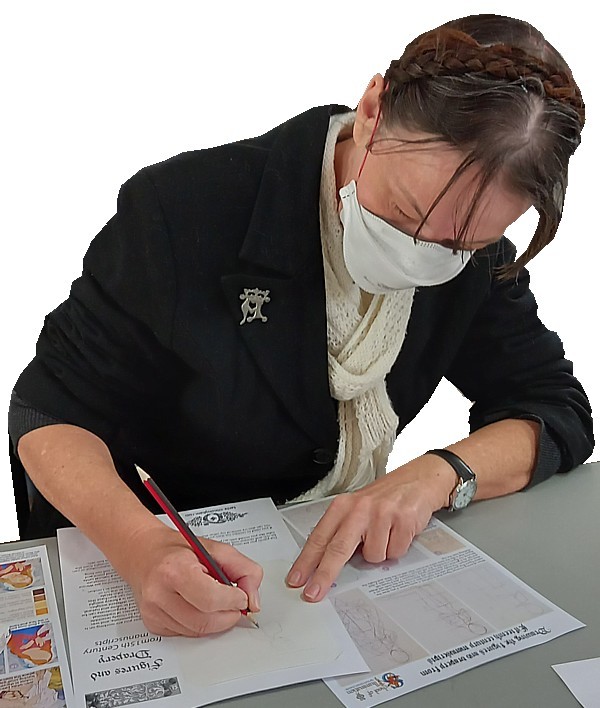
We had a drawing guide, and I did well enough with the figure itself. Once the drapery started to go in, however, I struggled to put folds where they were in the guide picture, because I really wanted to put the folds and crumples when I felt they would fall, not where they had been put in the artwork. I was pleased with my work, but already at this point it was starting to stray a bit from the image it was supposed to look like.
I kept correcting it, but that was a real exercise in frustration.
Once we started in with the colouring, I was feeling a bit happier. Tania offered advice on how to use the colours to look like they do in manuscripts and showed us which order to do things and when to start adding detail. By half time, I was sort of happy with how it was going, but the folds in my picture, were definitely not like they were supposed to be.
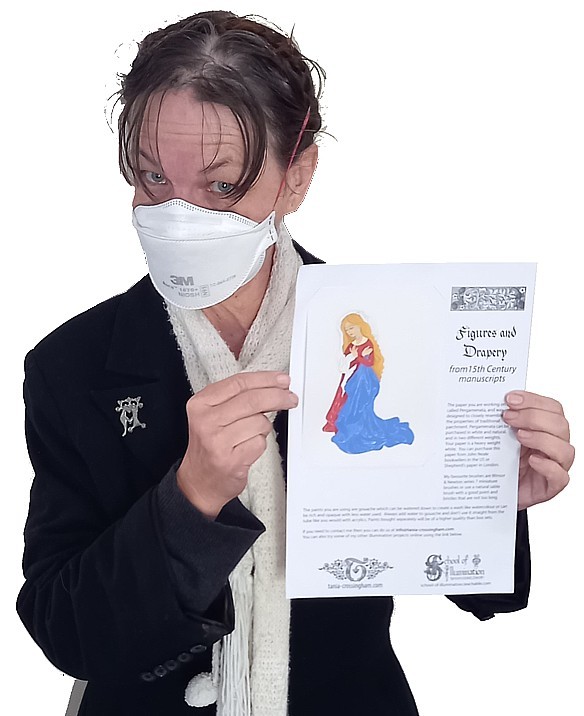
Here's how it was looking with large blocks of colour and very little detail. I was pretty pleased with her hair and face at this point, which was a definite win for me. Sometimes my faces in medieval art really don't quite work, and again, my face wasn't looking like it was supposed to, but it was consistent with art and didn't need fixing.
The folds in the fabric were another story altogether.
I redid the folds and scraped them off the parchment multiple times and was supremely unhappy with the end result. We all enjoyed looking at each other's work and progress and seeing everyone's interpretations of the image and their results. Some more experienced illuminators produces really fabulous results. It was very obvious who copies well and who kept wanting to add a bit of license. (Which is fine normally, but less so in a class where we were supposed to be doing a certain thing.)
In the end, I will need to redo the folds again to get a result I am happy showing people, but I managed to take some nice photos with my glasses artistically placed over the bit I really was unhappy with. If you look closely, you can see why it isn't really working. Overall, I really enjoyed the workshop and learned a few things but I had hoped there would be more "This is how you know where to draw your folds" and less "Copy this picture." I have done fabric folds in art before at High School, and I can draw folds from life. I just struggled seeing how all the folds and crinkles on the supplied picture were formed, so it was extremely stressful for me on a personal level.
The end result is this:
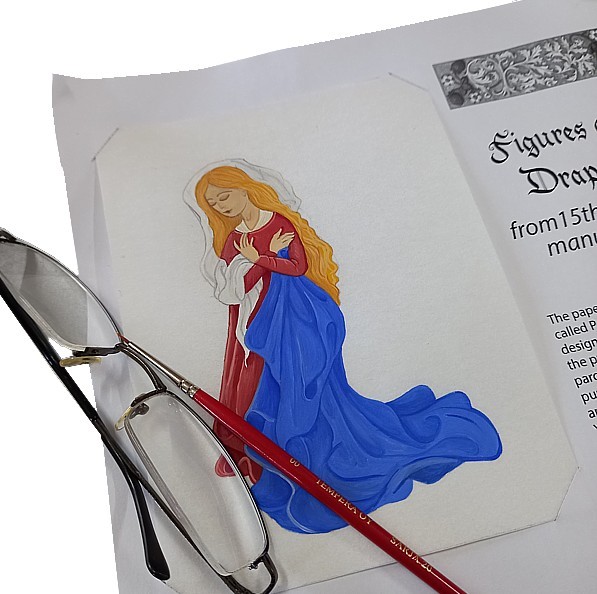


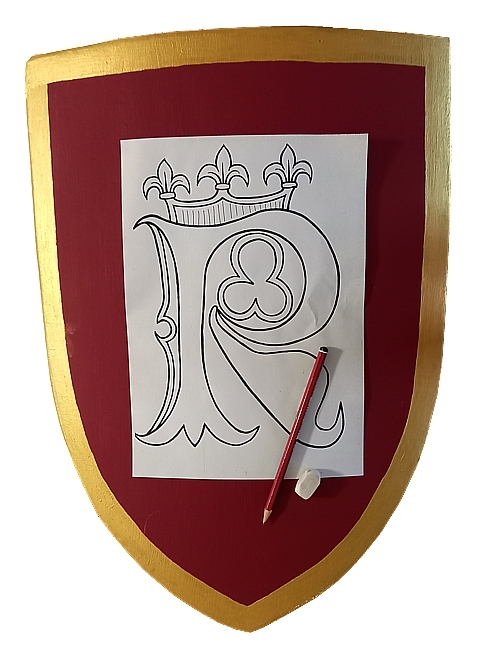
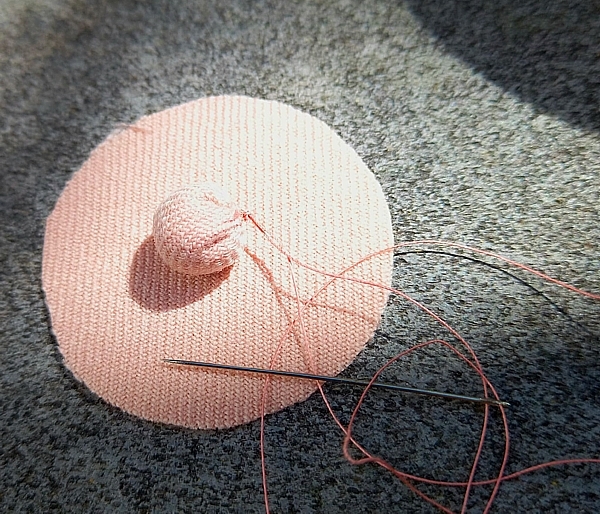
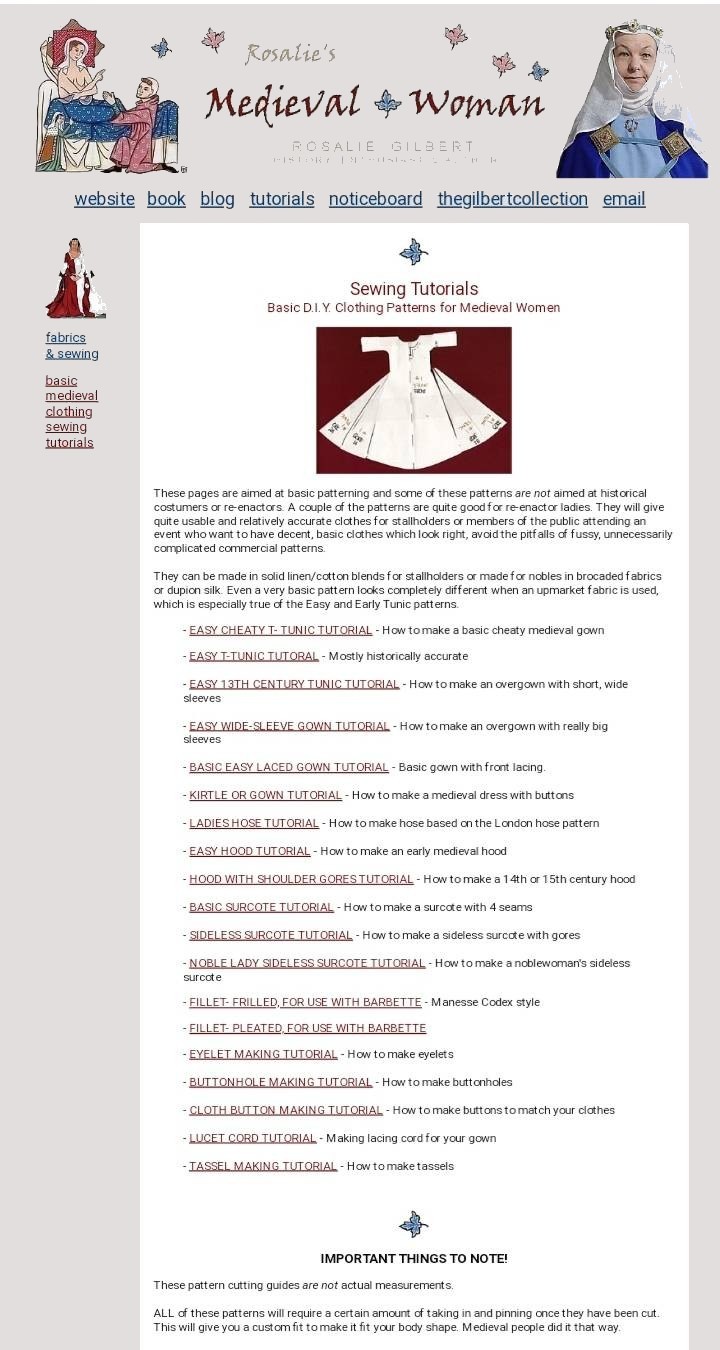
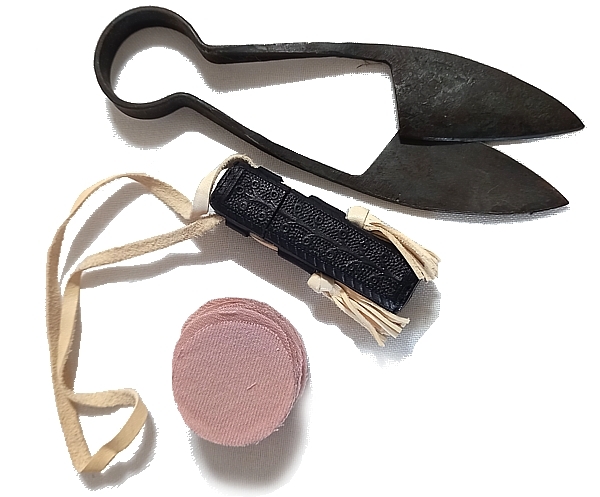
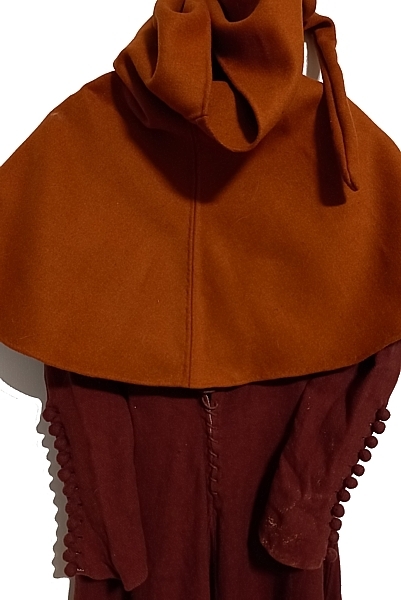

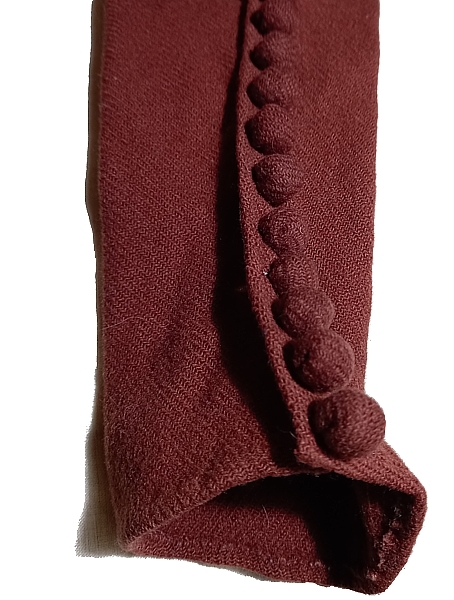

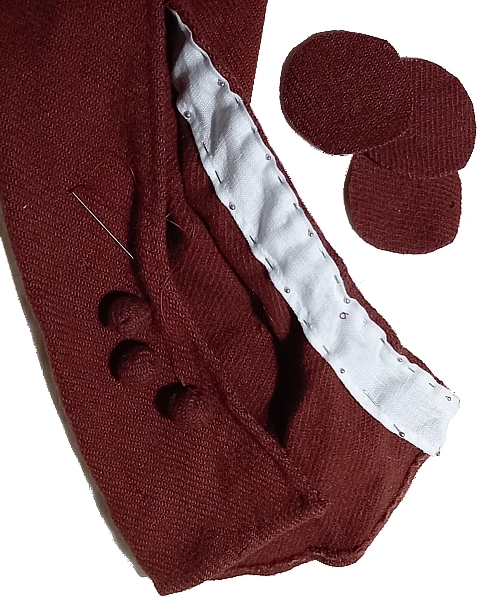
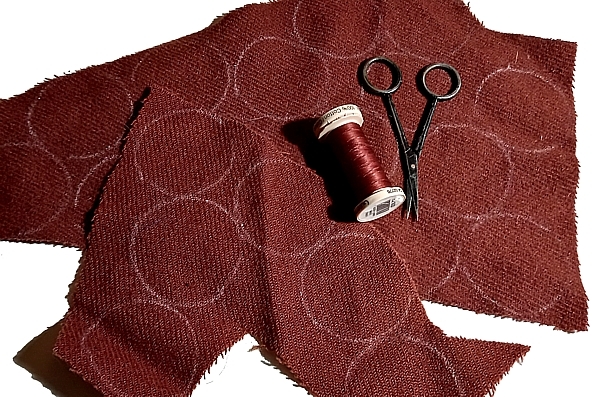
 It really doesn't take too long to cut them out, but with the thicker wool, it does take about 12 minutes each to sew, plus the needle-threading and fiddling around.
It really doesn't take too long to cut them out, but with the thicker wool, it does take about 12 minutes each to sew, plus the needle-threading and fiddling around.
